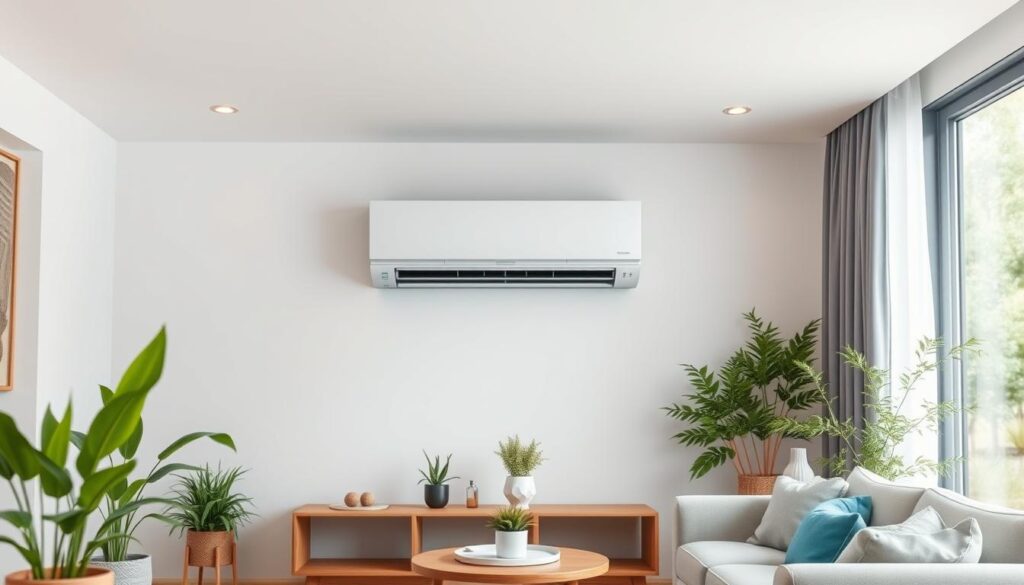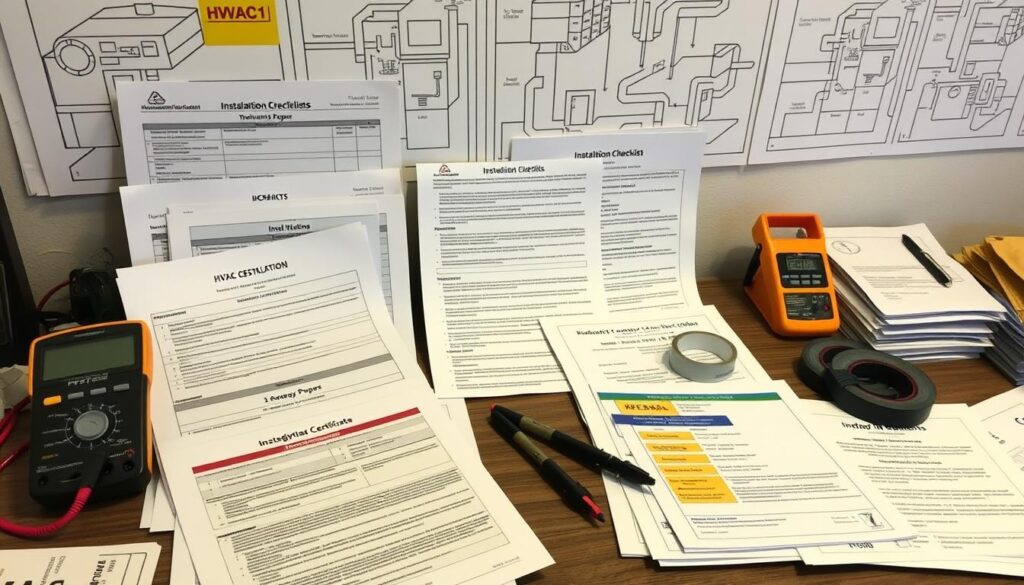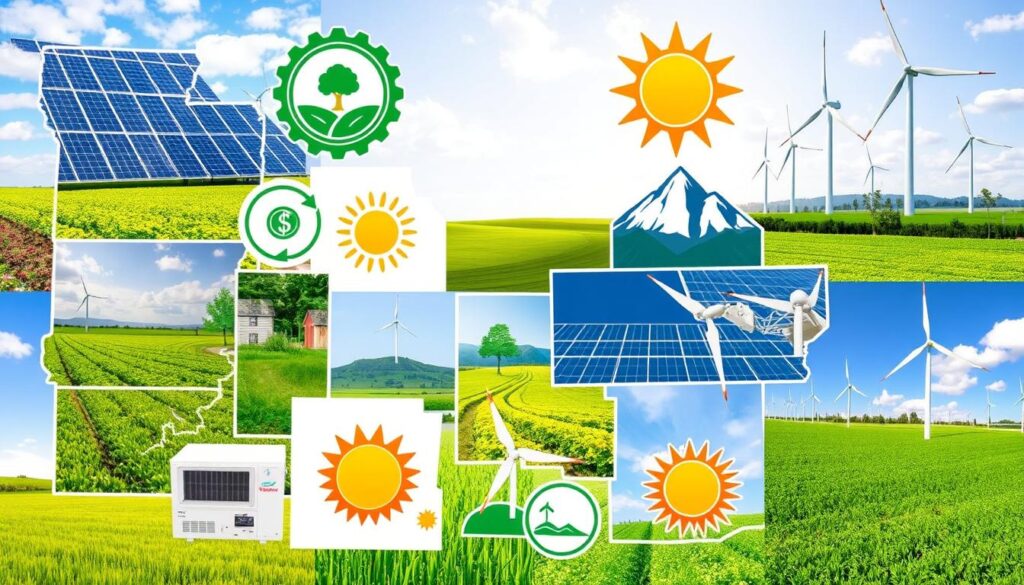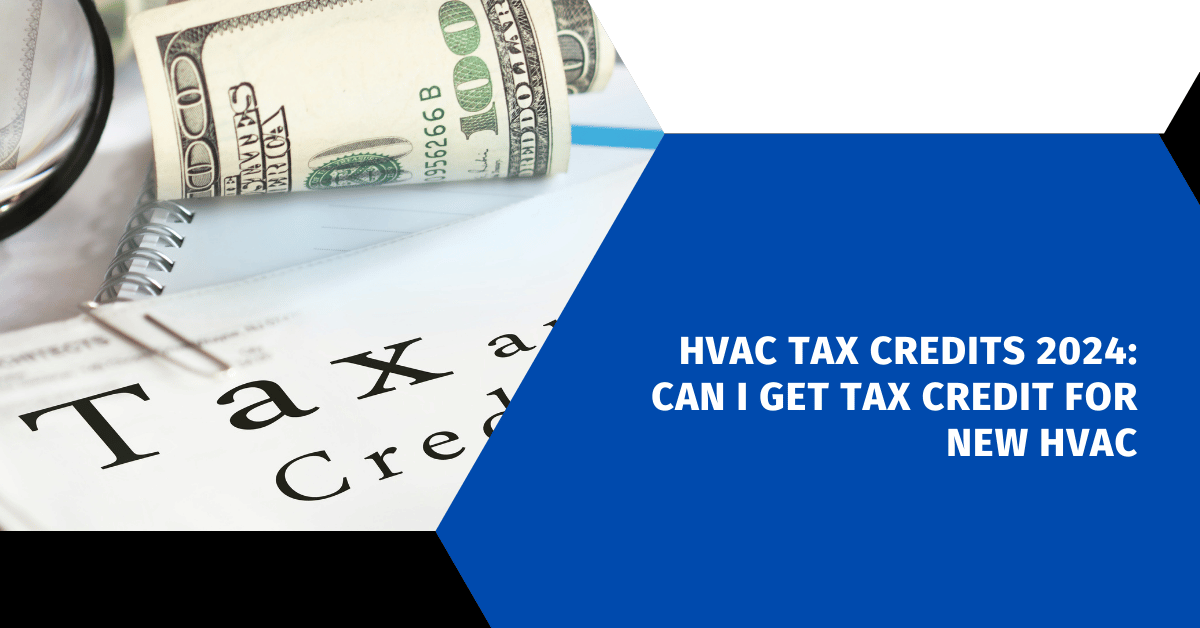Affiliate Disclosure
HVAC Guide Guys is a participant in the Amazon Services LLC Associates Program, an affiliate advertising program designed to provide a means for sites to earn advertising fees by advertising and linking to Amazon.
Can I Get Tax Credit for New HVAC? Are you a homeowner looking to upgrade your HVAC system? You might be surprised to learn about the tax incentives available. The Energy Efficient Home Improvement Credit can help you save a lot on your next HVAC installation or replacement. But, how do these tax credits work, and can you claim them? Let’s explore the details together.

Key Takeaways
- The tax credit for qualified energy-efficient HVAC improvements can amount to up to $3,200 through 2032.
- The credit covers 30% of certain qualified expenses, including HVAC systems, energy efficiency upgrades, and home energy audits.
- Eligible HVAC systems must meet specific efficiency standards to qualify for the tax credit.
- The credit is available for existing homes and principal residences in the United States.
- Claiming the credit requires filing IRS Form 5695 and providing documentation on the installed equipment.
Table of Contents
Understanding the New HVAC Tax Credit Program for 2024
The Inflation Reduction Act of 2022 has made big changes. It now offers more tax incentives for energy-efficient HVAC systems in 2024. This program helps homeowners save money by making their homes more sustainable.
Key Changes in Tax Credit Regulations
Homeowners can now get up to $1,200 in tax credits for energy-saving home upgrades. They might also get an extra $2,000 for certain appliances like heat pumps and water heaters. This is all thanks to the new rules, which started in 2023 and go until 2032.
Maximum Credit Amounts Available
Homeowners can get a tax credit of up to 30% for new, high-efficiency HVAC units. This means up to $2,000 for heat pumps and $600 for air conditioners. These credits are a big help for those looking to save energy and money.
Timeline and Deadlines for Claims
The program started in 2023 and will run until at least 2032. Homeowners can claim these credits when they file their taxes. The program might even last longer, but the credits will decrease after 2032.
“The Inflation Reduction Act has provided homeowners with an incredible opportunity to upgrade their HVAC systems and save money through attractive tax credits and incentives.”
Explore Our HVAC Shop
Looking for top-rated HVAC tools, parts, and accessories? Visit our shop and find the perfect solution for your needs.
Visit the ShopCan I Get Tax Credit for New HVAC
Homeowners can get tax credits for new energy-efficient HVAC systems. These HVAC tax credit eligibility incentives help cover the cost of upgrades. They support your move towards a residential clean energy home.
Eligible systems include central air conditioners and furnaces that meet high efficiency standards. Heat pumps that meet these standards can also get up to $2,000 in credits. This covers both the equipment and installation costs.
You can save more by doing multiple upgrades in one year. The credits can be claimed annually until 2032. But, they are non-refundable.
| Tax Credit Type | Credit Percentage | Maximum Credit | Eligibility Period |
|---|---|---|---|
| Energy Efficient Home Improvement Credit | 30% | $1,200 per year (with $2,000 limit for heat pumps, biomass stoves, and boilers) | 2023 to 2032 |
| Residential Clean Energy Credit | 30% | No annual maximum or lifetime limit | 2022 to 2032 (decreases to 26% in 2033 and 22% in 2034) |
By using these tax credits, homeowners can save up to $3,200 a year. This is a 30% reduction in costs for energy-efficient upgrades. The Residential Clean Energy credit and the Energy Efficient Home Improvement Credit offer great savings opportunities.
“Upgrading to an energy-efficient HVAC system not only saves you money on your utility bills but also qualifies you for valuable federal tax credits. It’s a win-win for both your wallet and the environment.”
Explore Our HVAC Shop
Looking for top-rated HVAC tools, parts, and accessories? Visit our shop and find the perfect solution for your needs.
Visit the ShopQualifying HVAC Systems and Equipment Requirements
To get the HVAC tax credits in 2024, your new HVAC systems and equipment must meet certain standards. They need to be ENERGY STAR certified and have a minimum efficiency level.
ENERGY STAR Certification Standards
All split HVAC systems, like air conditioners and heat pumps, must be ENERGY STAR certified. This means they meet high performance and efficiency criteria from the ENERGY STAR program. ENERGY STAR certification shows your HVAC equipment is very energy-efficient.
Minimum Efficiency Requirements
- Split air conditioners and heat pumps need a SEER2 rating of 16 or higher.
- Packaged HVAC systems (all-in-one units) must be ENERGY STAR certified, with no extra efficiency needs.
- Furnaces and boilers must meet or exceed the Consortium for Energy Efficiency (CEE) highest efficiency tiers.
- Heat pumps and biomass stoves/boilers have specific minimum efficiency standards they must meet.
Eligible HVAC Components
The tax credits cover not just the HVAC unit but also the necessary electrical parts. This includes panelboards and branch circuits. It ensures your entire HVAC system is efficient and well-installed for better energy savings and performance.
The HVAC tax credits focus on ENERGY STAR certification and strict efficiency standards. They encourage homeowners to choose the most advanced and energy-efficient HVAC equipment. This reduces household energy use and carbon footprint, leading to long-term cost savings.
Credit Limits and Financial Benefits for Homeowners
Upgrading your home’s HVAC system can save you money on taxes and offer rebates. The Inflation Reduction Act of 2022 has raised the tax credit for energy-efficient home upgrades. Now, homeowners can get up to $3,200 in annual credits.
The $3,200 credit limit includes a $1,200 cap for home envelope upgrades and HVAC systems. Plus, there’s an extra $2,000 for heat pumps, water heaters, and biomass stoves or boilers. This means you can get a 30% tax credit on qualifying expenses. This is a big savings for homeowners who choose energy-efficient HVAC equipment.
Upgrading to an energy-efficient HVAC system also means lower energy bills. This adds to the financial gains of your investment. With tax savings and long-term energy savings, the HVAC investment returns can be quite attractive for homeowners.
“The new tax credits and rebates make energy-efficient HVAC upgrades more accessible and financially viable for homeowners. It’s a win-win for both the environment and your wallet.”
To get the most out of these benefits, it’s important to know what you need to qualify. Talking to a qualified HVAC contractor or tax professional can help. They can make sure you use all the available incentives.
Explore Our HVAC Shop
Looking for top-rated HVAC tools, parts, and accessories? Visit our shop and find the perfect solution for your needs.
Visit the ShopPrimary Residence Requirements and Eligibility Criteria
The HVAC tax credit program helps homeowners make their homes more energy-efficient. To get the tax credits, your home must be your main residence. This means it’s where you live most of the year. Rental properties, vacation homes, and new homes don’t qualify.
Property Type Restrictions
The tax credit is for many types of homes, including:
- Houses
- Houseboats
- Mobile homes
- Cooperative apartments
- Condominiums
- Manufactured homes
These homes must be in the United States to get the tax credit.
Ownership and Occupancy Rules
Your home must be your principal residence to qualify. This means it can’t be a rental or vacation home. Only homeowners who live there full-time can get the tax credit. The credit covers the cost of the HVAC equipment and its installation.
| Qualifying Homes | Non-Qualifying Homes |
|---|---|
|
|
The program focuses on principal residences to encourage lasting improvements. This makes your home more energy-efficient and saves you money. It’s a win for both your wallet and the environment.
Installation Requirements and Documentation Needed
To claim the HVAC tax credit, you need proper installation and detailed records. Keep track of the purchase and installation, including receipts and Energy Star labels. This ensures you get the most out of the credit.
Starting in 2025, each HVAC part must have a unique product ID from a certified maker. This ID is crucial for your tax return. Make sure your HVAC contractor gives you this information after installation.
- Gather all HVAC installation records, including receipts, invoices, and work orders.
- Collect manufacturer certifications showing the equipment meets energy standards.
- Get copies of energy efficiency documentation, like Energy Star labels, for your system and parts.
Your HVAC contractor should give you all the needed documents for your tax credit claim. Review and organize these papers well. They are essential for your tax return.
“Proper documentation is key to maximizing your HVAC tax credit benefits. Work closely with your installer to ensure you have everything you need.”

By keeping detailed records and working with your HVAC contractor, you’ll have a smooth tax credit application. If you’re unsure, don’t hesitate to ask a tax expert for help.
Explore Our HVAC Shop
Looking for top-rated HVAC tools, parts, and accessories? Visit our shop and find the perfect solution for your needs.
Visit the ShopHow to Claim Your HVAC Tax Credit
Claiming the Energy Efficient Home Improvement Tax Credit for your new HVAC system is easy. You just need to file the right tax forms and have the right documents ready.
Required Tax Forms and Documentation
To claim the tax credit, you’ll need to file IRS Form 5695 (Residential Energy Credits) with your tax return. This form helps you figure out how much credit you can get for your HVAC upgrades.
Make sure you save all receipts, certifications, and Energy Star documents from your HVAC installation. These will help prove your claim and make sure the tax credit is applied correctly.
Filing Process and Deadlines
The tax credit is for the year you installed your HVAC system, not when you bought it. So, if you installed it in 2023, claim the credit on your 2023 tax return.
The tax credit is nonrefundable. It can lower your tax bill to zero but won’t give you a refund. But, you can carry over any unused credit to later years.
Don’t forget to file your tax return and claim the HVAC tax credit before the deadline. This way, you’ll get the most financial benefits.
“The recent expansion of HVAC tax credits under the Inflation Reduction Act provides a significant financial incentive for homeowners to upgrade their heating and cooling systems to more energy-efficient models.”
Additional Energy Efficiency Incentives and Rebates
Homeowners in the United States can get more than just federal tax credits for new HVAC systems. They might also find state energy incentives, utility rebates, and other programs. These can help lower the cost of getting more energy-efficient heating and cooling systems.
The Inflation Reduction Act sets aside nearly $370 billion for climate and energy programs. Homeowners could get up to 30% of installation costs (up to $1,200 per year) for certain HVAC systems. There are also tax credits of up to $2,000 for heat pumps, $600 for air conditioners, $600 for furnaces, and $600 for electrical upgrades.
The 25C tax credit can go up to $3,200 with a qualifying heat pump. Rebates vary by state and depend on income. Check with your local utility companies and state energy office for more savings.
Heat pumps need a Coefficient of Performance (COP) greater than 1.75 at 5 degrees Fahrenheit and a Heating Capacity Ratio (HCR) of at least 70% to qualify. This is for cold climate heat pumps.
These incentives, rebates, and programs can offer big financial benefits. They help homeowners upgrade their HVAC systems and make their homes more energy-efficient.

Conclusion
The 2024 HVAC tax credits are a great chance for homeowners to make their homes more energy-efficient. You can get up to 30% of your project costs back. This means you can get better home comfort and lower your taxes at the same time.
These tax credits are available every year until 2032. They help you plan and do energy-saving home upgrades. You can install heat pumps or upgrade your air conditioners. This way, you save money upfront and on your energy bills later.
To get the most out of these credits, work with a tax expert and a certified HVAC contractor. They can help you understand what you need and what works best for you. They also make sure you follow all the rules and report everything correctly. With their help, you can easily get the tax savings you’re entitled to.
FAQ
What is the Energy Efficient Home Improvement Credit?
How much can I get in tax credits for a new HVAC system?
What are the requirements for HVAC systems to qualify for the tax credit?
What is the annual limit for the Energy Efficient Home Improvement Credit?
What is the Energy Efficient Home Improvement Credit?
How much can I get in tax credits for a new HVAC system?
What are the requirements for HVAC systems to qualify for the tax credit?
What is the annual limit for the Energy Efficient Home Improvement Credit?
FAQ
What is the Energy Efficient Home Improvement Credit?
The Energy Efficient Home Improvement Credit gives homeowners up to ,200 in tax credits. This is for energy-efficient upgrades made after January 1, 2023. It covers 30% of certain expenses, like HVAC systems, and is available until 2032.
How much can I get in tax credits for a new HVAC system?
You can get tax credits for new HVAC systems that meet energy standards. This includes central air conditioners and furnaces that meet the Consortium for Energy Efficiency (CEE) highest tier. Heat pumps can get up to ,000 per year if they meet CEE standards.
What are the requirements for HVAC systems to qualify for the tax credit?
To qualify, split systems need to be ENERGY STAR certified with SEER2 ≥ 16. All ENERGY STAR certified packaged systems qualify. Central air conditioners, furnaces, and boilers must meet the CEE highest efficiency tier. Heat pumps and biomass stoves/boilers have specific efficiency needs.
What is the annual limit for the Energy Efficient Home Improvement Credit?
The annual limit for the Energy Efficient Home Improvement Credit is ,200. This includes
FAQ
What is the Energy Efficient Home Improvement Credit?
The Energy Efficient Home Improvement Credit gives homeowners up to $3,200 in tax credits. This is for energy-efficient upgrades made after January 1, 2023. It covers 30% of certain expenses, like HVAC systems, and is available until 2032.
How much can I get in tax credits for a new HVAC system?
You can get tax credits for new HVAC systems that meet energy standards. This includes central air conditioners and furnaces that meet the Consortium for Energy Efficiency (CEE) highest tier. Heat pumps can get up to $2,000 per year if they meet CEE standards.
What are the requirements for HVAC systems to qualify for the tax credit?
To qualify, split systems need to be ENERGY STAR certified with SEER2 ≥ 16. All ENERGY STAR certified packaged systems qualify. Central air conditioners, furnaces, and boilers must meet the CEE highest efficiency tier. Heat pumps and biomass stoves/boilers have specific efficiency needs.
What is the annual limit for the Energy Efficient Home Improvement Credit?
The annual limit for the Energy Efficient Home Improvement Credit is $3,200. This includes $1,200 for home envelope improvements and HVAC systems. Plus, an extra $2,000 for heat pumps and biomass stoves/boilers.
What types of properties are eligible for the HVAC tax credit?
The tax credit is for improvements to your main home, where you live most of the time. This includes houses, houseboats, mobile homes, and more. But, new construction and rental properties don’t qualify.
How do I claim the HVAC tax credit?
To claim the Energy Efficient Home Improvement Credit, file IRS Form 5695 with your tax return. The credit is for the tax year the HVAC system was installed, not just bought. Keep all receipts and Energy Star documents for your records.
Are there any other energy efficiency incentives available?
Yes, besides federal tax credits, there are state and local incentives or utility rebates for energy-efficient HVAC installations. These can include cash rebates, low-interest loans, or more tax incentives.
,200 for home envelope improvements and HVAC systems. Plus, an extra ,000 for heat pumps and biomass stoves/boilers.
What types of properties are eligible for the HVAC tax credit?
The tax credit is for improvements to your main home, where you live most of the time. This includes houses, houseboats, mobile homes, and more. But, new construction and rental properties don’t qualify.
How do I claim the HVAC tax credit?
To claim the Energy Efficient Home Improvement Credit, file IRS Form 5695 with your tax return. The credit is for the tax year the HVAC system was installed, not just bought. Keep all receipts and Energy Star documents for your records.
Are there any other energy efficiency incentives available?
Yes, besides federal tax credits, there are state and local incentives or utility rebates for energy-efficient HVAC installations. These can include cash rebates, low-interest loans, or more tax incentives.

